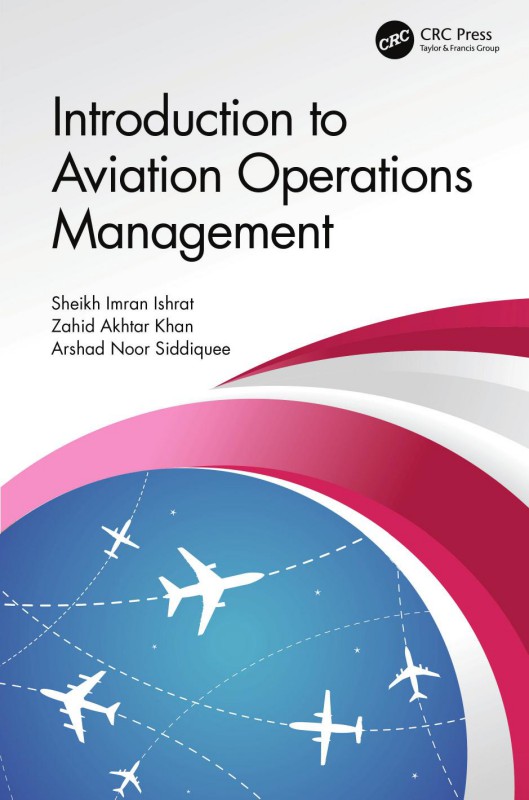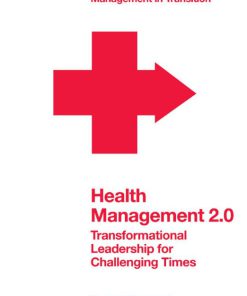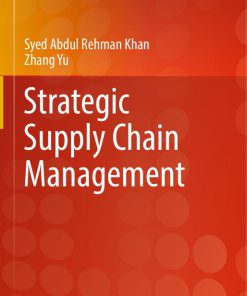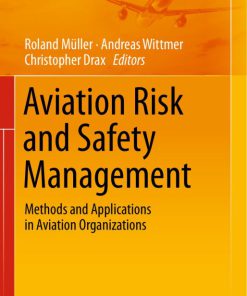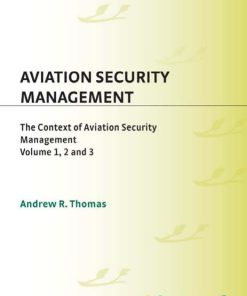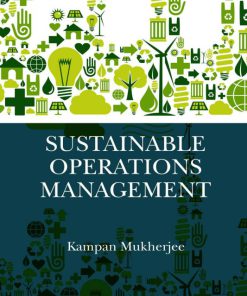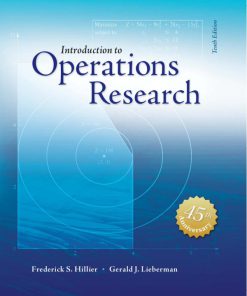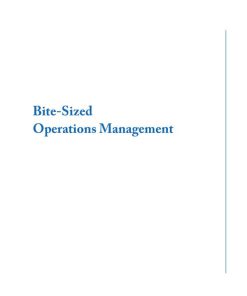Introduction to Aviation Operations Management 1st Edition by Sheikh Imran Ishrat, Zahid Akhtar Khan, Arshad Noor Siddiquee ISBN 9781351399593 1351399594
$50.00 Original price was: $50.00.$25.00Current price is: $25.00.
Authors:Sheikh Imran Ishrat , Series:Management [855] , Author sort:Ishrat, Sheikh Imran , Languages:Languages:eng , Published:Published:Jan 2023 , Publisher:CRC Press , Comments:Comments:Airline operations are large, complex, and expensive. Introduction to Aviation Operations Management attempts to systematically present the overall scenario of aviation industry and airline practices. Furthermore, concepts, strategies, and issues prevailing in the aviation industry are addressed through numerous operations management and optimization approaches. The book aims to provide readers with an insight into aviation industry practices with respect to airport management, resource allocation, airline scheduling, disruption management, and sustainability which are significant for day-to-day aviation operations.This book is aimed at senior undergraduate students pursuing programs related to the aviation industry and operations management.Features:Presents operations management perspectives in the aviation sector.Discusses global scenarios of aviation industry and airline practices.Concepts are explained through operations management and optimization approaches.Discusses airport management, resource allocation, airline scheduling, and disruption management issues.Includes standard practices and issues related to the aviation industry.
Introduction to Aviation Operations Management 1st Edition by Sheikh Imran Ishrat, Zahid Akhtar Khan, Arshad Noor Siddiquee – Ebook PDF Instant Download/Delivery. 9781351399593 ,1351399594
Full download Introduction to Aviation Operations Management 1st Edition after payment
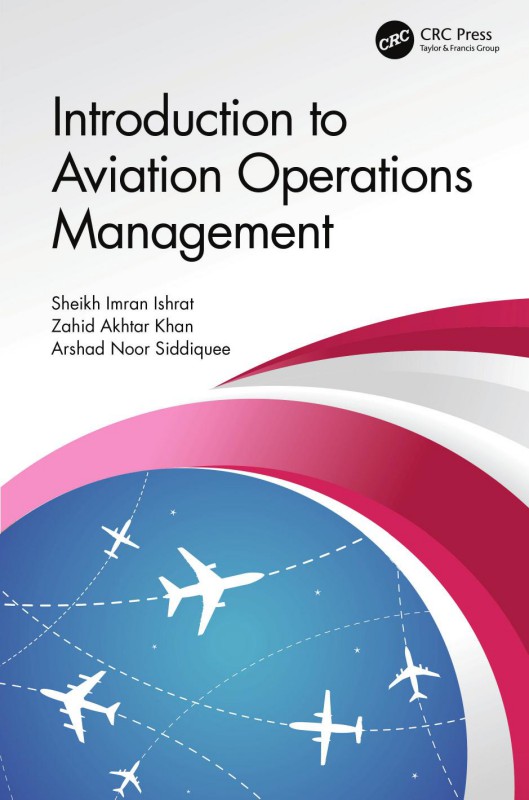
Product details:
ISBN 10: 1351399594
ISBN 13: 9781351399593
Author: Sheikh Imran Ishrat, Zahid Akhtar Khan, Arshad Noor Siddiquee
Introduction to Aviation Operations Management 1st Edition Table of contents:
1 History of Civil Aviation
Chapter Objectives
1.1 Introduction
1.2 Before 1900: Early Attempts
1.3 1900–1950: The Evolution
1.4 1950–2000: Connecting the World
1.5 2000 and Beyond: Changing Landscapes
1.6 Conclusion
Chapter Questions
References
2 Global Aviation Operations
Chapter Objectives
2.1 Introduction
2.2 Aviation Regulatory Bodies
2.2.1 International Civil Aviation Organization
2.2.2 International Air Transport Association
2.2.3 European Aviation Space Agency
2.2.4 Federal Aviation Administration
2.3 Airport Locations and Categories
2.3.1 Western Hemisphere (TCA 1)
2.3.2 Eastern Hemisphere (TCA 2)
2.3.3 Eastern Hemisphere (TCA 3)
2.4 Airlines
2.4.1 Hub-and-Spoke Network
2.4.2 Point-to-Point Network
2.5 Consumers
2.6 Impact of COVID-19 on the Aviation Industry
2.7 Conclusion
Chapter Questions
References
3 Civil Aviation Landscape in India
Chapter Objectives
3.1 Introduction
3.2 Civil Aviation Regulatory Bodies
3.2.1 Continuing Airworthiness
3.2.2 Aircraft Certification
3.2.3 Air Navigation Services
3.2.4 Aircraft Operations
3.2.5 Legal Affairs
3.2.6 Personal Licensing
3.2.7 Aerodromes and Ground Aids
3.2.8 Administration
3.2.9 Flying Training and Sports
3.2.10 Air Operator Certification and Management
3.2.11 Investigation and Prevention
3.2.12 Information Technology
3.2.13 Training
3.2.14 International Cooperation
3.2.15 Surveillance and Enforcement
3.2.16 State Safety Program
3.3 Airports in India
3.3.1 Domestic Airports
3.3.2 International Airports
3.4 Airline Operators in India
3.4.1 The Early Days
3.4.2 Major Developments
3.4.3 Emergence of Low-Cost Carriers (LCC)
3.5 Conclusion
Chapter Questions
References
4 Aviation Supply Chains
Chapter Objectives
4.1 Introduction
4.2 Supply Chain Management
4.2.1 Strategies and Challenges
4.2.2 Procurement
4.2.3 Manufacturing
4.2.4 Distribution
4.3 Aviation Supply Chains
4.3.1 Airline Supply Chain
4.3.2 Airport Supply Chain
4.4 Conclusion
Chapter Questions
References
5 Airport Operations
Chapter Objectives
5.1 Introduction
5.2 Operational Aspects
5.2.1 Airside Operations
5.2.2 Landside Operations
5.3 Airport Competition
5.3.1 Airport Monopoly
5.3.2 Airport Capacity
5.3.3 Airport Location
5.3.4 Airport Service Quality
5.3.5 Passenger Considerations
5.4 Conclusion
Chapter Questions
References
6 Airline Operations
Chapter Objectives
6.1 Introduction
6.2 Airline Industry
6.2.1 Airline Schedule Construction
6.2.2 Flight Schedule
6.2.3 Fleet Assignment
6.2.4 Aircraft Routing
6.2.5 Crew Scheduling
6.3 India-Based Domestic Network
6.3.1 Flight Network
6.3.2 Aircraft Routings
6.3.3 Crew Pairings
6.4 Other Scheduling Techniques
6.5 Conclusion
Chapter Questions
References
7 Airline Disruption Management – I
Chapter Objectives
7.1 Introduction
7.2 Disruption Management
7.3 Types of Disruption
7.4 Schedule Recovery from Disruptions
7.5 Aircraft Recovery Approaches
7.5.1 Solution Approaches Based on Network Flows
7.5.2 Solution Approaches Based on Time–Space Networks
7.5.3 Solution Approaches Based on Time–Band Networks
7.5.4 Set Partitioning Models Formulated on Connection Networks
7.5.5 Heuristic Approaches
7.5.6 Other Approaches
7.6 Crew Recovery Approaches
7.6.1 Crew Recovery with Fixed Flight Schedule
7.6.2 Crew Recovery with Flight Cancellations
7.6.3 Crew Recovery with Departure Delays
7.7 Passenger and Integrated Recovery
7.8 Conclusion
Chapter Questions
References
8 Airline Disruption Management – II
Chapter Objectives
8.1 Introduction
8.2 The Concept of Disruption Neighborhood
8.3 Initial Neighborhood
8.3.1 Resources of the Disrupted Flight: Aircraft
8.3.2 Resources of the Disrupted Flight: Crew
8.3.3 Resources of the Affected Flights
8.4 Expansion of Neighborhood
8.5 Network Creation and Column Generation
8.5.1 Aircraft Network
8.5.2 Captain Network
8.5.3 First Officer Network
8.6 Set Partitioning Formulation
8.7 Rolling Time Horizon Recovery
8.8 Other Recovery Considerations
8.9 Conclusion
Chapter Questions
References
9 Sustainability in the Aviation Industry
Chapter Objectives
9.1 Introduction
9.2 Environmental Sustainability
9.2.1 Air Pollution
9.2.2 Noise Pollution
9.2.3 Aviation Fuel
9.2.4 Water Pollution
9.2.5 Climate Change
9.3 Social and Economic Sustainability in Aviation
9.4 Sustainability in Airport Operations
9.5 Sustainability Reporting in Aviation Industry
9.6 Challenges in Aviation Sustainability
9.7 Achieving Sustainability in Aviation Industry
9.7.1 Technological Improvements
9.7.2 Fuel Options
9.7.3 Aviation Policy
9.7.4 Waste Management Aspects
9.8 Conclusion
Chapter Questions
References
10 Comparison of Airline and Railway Operations
Chapter Objectives
10.1 Introduction
10.2 Scheduling in Railway Industry
10.2.1 Sequential Scheduling
10.2.2 Robust Scheduling
10.3 Disruption Management in Railways
10.3.1 Timetable Adjustments
10.3.2 Rolling Stock Re-scheduling
10.3.3 Crew Re-scheduling
10.4 Airline and Railway Scheduling: A Comparison
10.4.1 Similarities
10.4.2 Differences
10.5 Conclusion
Chapter Questions
References
Appendices
Index
People also search for Introduction to Aviation Operations Management 1st Edition:
why study aviation management
what is aviation management
introduction to aviation course
introduction to aviation physiology
You may also like…
eBook PDF
(EBOOK PDF) Aviation Security Management 1st Edition 0313346534 9780313346538 full chapters
eBook PDF
Sustainable Operations Management 1st Edition by Kampan Mukherjee 1498796524 9781498796521

